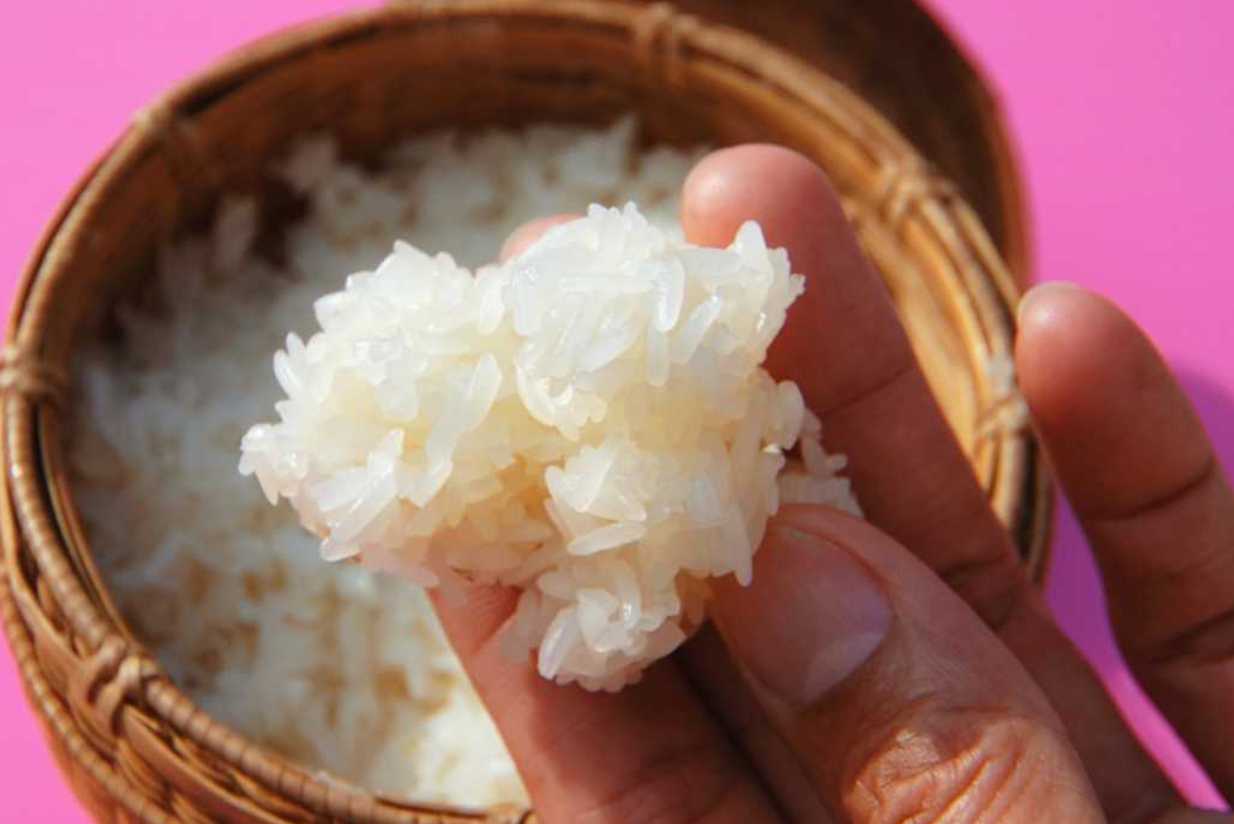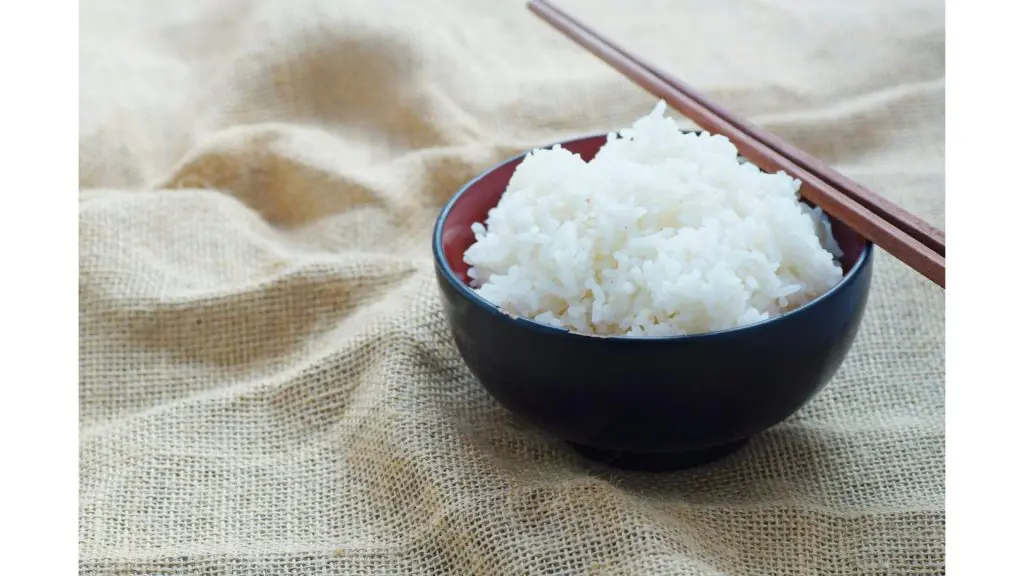When it comes to rice choices, understanding the differences between glutinous rice and sushi rice can elevate your culinary experience to a whole new level. Dive into the nuances of these two popular varieties of rice, from their distinct characteristics to their culinary uses.
Whether you’re a seasoned chef or a curious food enthusiast, unraveling the mysteries of Glutinous Rice vs Sushi Rice is a journey worth embarking on. Let’s explore the finer details of these grains and uncover how they can enhance your cooking endeavors.
Glutinous Rice: Sticky and Delicious

Glutinous rice, also known as sticky rice or sweet rice, has unique qualities that make it stand out from other types of rice. Unlike long-grain varieties, glutinous rice has short and plump grains. When cooked, these grains transform into a shiny, translucent delight.
The true star of the show, however, is the texture. As the name suggests, glutinous rice becomes incredibly sticky after cooking. This characteristic makes it perfect for a variety of culinary applications in Asian cuisine.
From classic dishes like sticky rice with mango to delightful dumplings and glutinous rice cakes, glutinous rice takes center stage. Its sticky nature allows it to hold its shape perfectly, whether formed into balls or used as a flavorful filling. So, next time you’re craving delicious and sticky Asian treats, look no further than glutinous rice!
Sushi Rice: The Heart of Japanese Cuisine
Sushi rice, also known as Japanese short-grain rice, is a fundamental element in Japanese cooking. It stands out for its unique combination of texture and flavor.
The Perfect Bite:
These plump, round grains cook up with a delightful stickiness, ideal for forming sushi rolls. Seasoned traditionally with vinegar, sushi rice acquires a pleasant tang that complements the fresh flavors of raw fish and other fillings.
Beyond Sushi:
This versatile rice goes far beyond sushi. It’s a key ingredient in other beloved Japanese dishes like onigiri (rice balls) and chirashizushi (scattered sushi). Its ability to soak up flavors makes it perfect for any dish that needs a sticky and flavorful rice base.
The Secret Ingredient: Sushi Vinegar
The distinct and delicious tang of sushi rice comes from its special vinegar seasoning. This seasoning, traditionally made with a simple mixture of rice vinegar, sugar, and salt creates a perfect harmony of sweetness, acidity, and saltiness in the rice. The vinegar also acts as a natural preservative, helping sushi stay fresh.
More Than Just Flavor:
Beyond flavor enhancement, the seasoning plays a crucial role in binding the rice grains together. This makes shaping and rolling the rice much easier, which is essential for creating perfect sushi. The resulting flavorful and tangy rice complements the delicate flavors of raw fish and other sushi ingredients, creating a harmonious and satisfying bite.
The Foundation of Tradition:
Sushi rice forms the very foundation of Japanese cuisine, serving as the key ingredient in many beloved recipes. One popular dish that showcases its versatility is nigiri sushi. This dish features a small mound of sushi rice topped with a slice of fresh fish or seafood. Another classic example is chirashi sushi, a vibrant bowl filled with sushi rice and a variety of colorful toppings like sashimi, vegetables, and more. These traditional Japanese dishes highlight the versatility and deliciousness of sushi rice, making it a key ingredient for creating authentic and mouthwatering meals.
Glutinous Rice vs. Sushi Rice: Knowing Your Grains
Glutinous rice (also known as sticky rice or sweet rice) and sushi rice have distinct characteristics that affect how they cook and the dishes they’re best suited for. Let’s explore the key differences between these two types of rice.
- Grain Appearance: Glutinous rice is short and plump, with a cloudy white color. Sushi rice, on the other hand, is medium to long in grain and has a pearly white appearance.
- Cooked Texture: Glutinous rice becomes soft and sticky and tends to clump together after cooking, resulting in a chewy texture. This makes it ideal for dishes like sticky rice desserts or dumplings, where you want the rice to hold its shape.
- Sushi Rice for Sushi: Sushi rice cooks up firmer and holds its shape well while still maintaining a slight stickiness that allows it to bind together in sushi rolls and nigiri. This characteristic is crucial for creating well-formed sushi.
Why Does Grain Structure Matter?
The different grain structures of these rice varieties are key to their culinary applications. Glutinous rice’s stickiness is perfect for holding its form, while sushi rice’s ability to hold its shape without becoming mushy is essential for creating good sushi.
Grain at a Glance
In short, the visual characteristics of glutinous and sushi rice play a significant role in how they cook up and the final texture of the dishes they’re used in. By understanding these differences, you can choose the right rice variety for your culinary creations.
Glutinous Rice vs. Sushi Rice: Nutrition and Benefits

Here’s a breakdown of the differences between glutinous rice and sushi rice, focusing on their nutritional value and health benefits.
Different Paths to Energy
- Glutinous Rice: Packs more calories and carbs per serving, making it a good source of energy. It also boasts slightly more protein and fiber than sushi rice, keeping you feeling fuller for longer.
- Sushi Rice is lower in calories and carbs, ideal for those watching their weight. Seasoned with vinegar for a tangy taste, the vinegar might even aid digestion.
Ultimately, the choice depends on your needs. Glutinous rice is great for filling meals, while sushi rice shines in calorie control.
Nutritional Breakdown:
- Glutinous Rice: A one-cup serving offers about 169 calories, 39 grams of carbs, 2 grams of protein, and no fat. It has some fiber, vitamins, and minerals. While not the most nutrient-dense rice, its chewy texture makes it a popular choice in Asian cuisine.
- Sushi Rice: A one-cup serving provides around 242 calories, 53 grams of carbs, 4 grams of protein, and no fat. It’s a good source of carbs for energy, with some fiber, vitamins, and minerals. The vinegar adds flavor and a potential digestive boost. While not a nutritional powerhouse, sushi rice is a delicious foundation for sushi rolls.
Glutinous Rice vs. Sushi Rice: Choosing the Right Grain
The Perfect Rice for Every Dish
Glutinous rice and sushi rice may seem similar, but they each have distinct qualities that make them ideal for different dishes. Understanding their unique characteristics will help you achieve delicious results in your kitchen.
Glutinous Rice: Sweet and Sticky Treats
Glutinous rice, also known as sweet rice or sticky rice, lives up to its name. When cooked, it transforms into a soft, sticky mass, perfect for Asian desserts and rice cakes. This unique texture allows it to be molded and shaped into various dishes.
- Desserts: Glutinous rice shines in sweet dishes like sticky rice with mango, which is cooked with coconut milk and paired with fresh mango slices. It’s also a key ingredient in rice dumplings, which are steamed to perfection and filled with sweet ingredients.
- Main Courses: Glutinous rice is also used in savory dishes beyond desserts. It can be used to make delicious sticky rice balls, crispy rice cakes, and even stuffed chicken with a delightful sticky rice filling.
Sushi Rice: The Foundation of Japanese Cuisine
Sushi rice, a short-grain variety, is specifically seasoned with vinegar, sugar, and salt. This seasoning creates a slightly sweet and slightly tart flavor profile that complements the fresh ingredients in sushi.
- Sushi Rolls: Sushi rice is the essential base for sushi rolls. Its sticky texture helps the rolls hold their shape and allows for easy handling with chopsticks. The rice is typically layered with various ingredients like seafood, vegetables, and sauces, then wrapped in seaweed.
- Sashimi: Sushi rice isn’t just for rolls! It’s also the perfect companion to sashimi, thinly sliced raw fish, or seafood. The neutral and slightly sweet rice provides a harmonious balance of textures and tastes alongside the delicate flavors of sashimi.
So, next time you’re craving Asian cuisine, remember to choose the right rice variety. Glutinous rice is used for sweet and sticky treats, and sushi rice is used to create beautiful and delicious sushi dishes.
Glutinous Rice vs. Sushi Rice: Choosing the Right Grain
Understanding the difference between glutinous rice and sushi rice is key for both home cooks and Asian cuisine enthusiasts. Here’s a breakdown:
- Glutinous Rice: This rice gets its name from its sticky, stretchy texture, which is ideal for dishes like dumplings and rice cakes. It’s high in starch, contributing to its signature characteristic.
- Sushi Rice: Perfect for sushi rolls and sashimi, sushi rice offers a slightly sticky yet fluffy texture. It also has a mild, slightly vinegary flavor due to its preparation with vinegar, sugar, and salt.
Selecting the Perfect Rice:
The key to choosing the right rice lies in the desired texture and flavor profile:
- Craving Chewy and Sticky rice? Glutinous rice is your friend! It’s perfect for traditional Asian treats like dumplings and rice cakes.
- Do you prefer fluffy with a Hint of Vinegar? Opt for sushi rice. It is essential for creating delicious sushi rolls and sashimi.
By understanding these differences, you can elevate your next Asian-inspired meal by selecting the perfect rice variety.
References:
FAQ About Rice Choices: Glutinous Rice Vs Sushi Rice: Understanding The Differences
Q: What are the main differences between glutinous rice and sushi rice?
A: Glutinous rice, also known as sticky rice, has a higher starch content compared to sushi rice. Sushi rice is a short-grain rice variety that is slightly sticky when cooked but not as sticky as glutinous rice.
Q: Can glutinous rice be used as a substitute for sushi rice?
A: While glutinous rice can be used as a substitute for sushi rice in some dishes, its stickier texture makes it unsuitable for making sushi. Sushi rice has the perfect balance of stickiness and firmness required for making sushi rolls.
Q: How do the cooking methods differ between glutinous rice and sushi rice?
A: Glutinous rice requires soaking before cooking to achieve its desired sticky texture, whereas sushi rice is rinsed before cooking to remove excess starch and then cooked with precise water-to-rice ratios to achieve the ideal texture for sushi.
Q: What dishes are best suited for glutinous rice and sushi rice, respectively?
A: Glutinous rice is commonly used in desserts, sticky rice dishes, and Asian sweet treats, while sushi rice is specifically used in making sushi, rice balls, and rice bowls in Japanese cuisine.
Q: Are there any nutritional differences between glutinous rice and sushi rice?
A: Glutinous rice is higher in calories and carbohydrates compared to sushi rice. Sushi rice is often seasoned with rice vinegar, sugar, and salt, making it lower in calories and providing a tangy flavor that complements sushi dishes.
Q: Can glutinous rice and sushi rice be stored in the same way?
A: Glutinous rice should be stored in a cool, dry place in an airtight container to maintain its freshness and prevent moisture from affecting its sticky texture. Sushi rice should be stored similarly but can also be refrigerated if not used immediately after cooking to maintain its quality for sushi making.

The Finer Diner has a rich history deeply rooted in the Mt. Oliver and Hilltop community. Our journey began with a simple yet ambitious vision – to create a welcoming space where friends and families could come together to enjoy delicious, comforting meals in a classic diner-style setting. Since our establishment, we have been dedicated to serving food, creating lasting memories, and fostering a sense of belonging within our community. Our commitment to quality, authenticity, and exceptional service has been the cornerstone of our success.